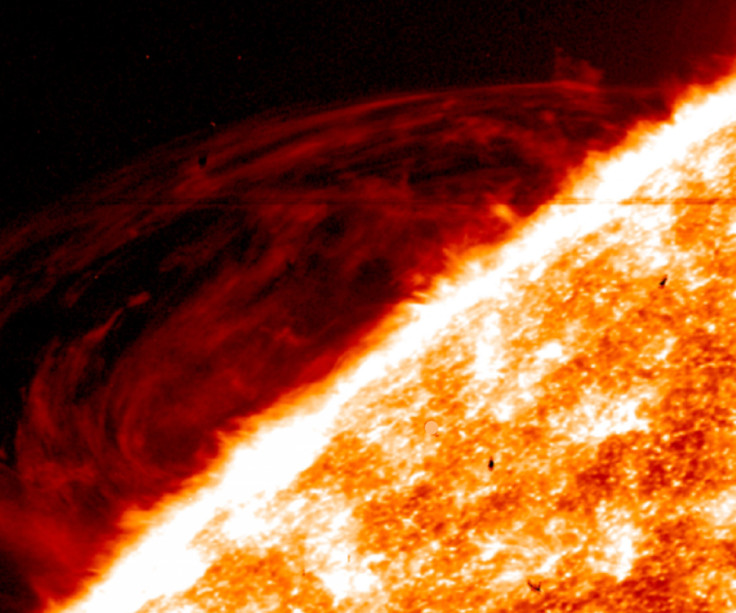NASA Gets Up Close And Personal With The Sun’s Atmosphere, Reveals One ‘Violent Place’
NASA’s Interface Region Imaging Spectrograph, or IRIS, has provided some of the most detailed and striking images yet of the sun’s atmosphere. IRIS was tasked with studying the interface region of the sun, the layer between the surface and the corona, and discovered plenty of activity and “explosive phenomena.”

IRIS was launched on June 27 and opened its telescope door on July 17. The spacecraft has spent six months observing the interface region of the sun and the new images were presented at the American Geophysical Union's fall meeting held on Monday.
For researchers, the images provide new insight on the role of the sun’s atmosphere in speeding up solar wind while aiding in eruptive solar events, such as coronal mass ejections. Researchers hope to use IRIS to understand energy transfer within the sun, as the upper layer of the sun’s atmosphere, the solar transition layer, is thousands of times hotter than the surface.
IRIS can take images of the sun as well as spectra, wavelengths of light. The spectra data lets researchers know the composition of the sun’s atmosphere as well as the temperature, density and velocity of the material, notes NASA. Bart De Pontieu, the top IRIS scientist at Lockheed Martin, said in a statement, “We are seeing rich and unprecedented images of violent events in which gases are accelerated to very high velocities while being rapidly heated to hundreds of thousands of degrees.”
For De Pontieu, IRIS has been a boon as he attempts to learn more about solar prominences and spicules. Prominences are loop-shaped cooler gas features that extend outward. These prominences can erupt and the resulting solar storm could reach Earth and affect satellite communication systems. Spicules are jets of gas that can be hundreds of kilometers wide and as long as the Earth, notes NASA. These gas jets travel from the surface of the sun to the outer layers of the solar atmosphere at speeds reaching 150,000 miles per hour.
The new data from IRIS will let researchers develop more refined theories on the evolution of prominences and spicules. The probe's success shows the effectiveness of low-cost missions, as IRIS was built in just 44 months and cost $120 million.
© Copyright IBTimes 2024. All rights reserved.






















